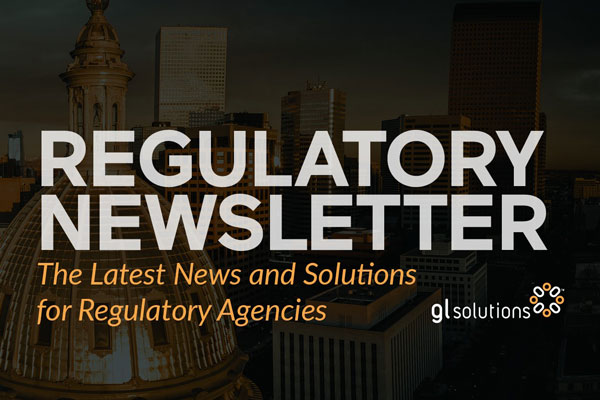Digital Champions Share Their Expertise
What are the barriers to achieving a digital government? And what strategies overcome these barriers? Research published in the Government Information Quarterly strives to answer those questions. To uncover answers, the researchers sifted through previous research and interviewed “digital champions.” They coined that term for government leaders who advance digital government policies and processes in government institutions and programs.
Through their efforts, digital champions work to break down resistance to agency modernization by demonstrating the tangible benefits of regulatory software solutions and encouraging a more dynamic approach to public service. Their role often extends beyond just technology implementation; they also focus on training and supporting their colleagues to use new digital systems effectively.
Barriers to a Digital Government
Fifty-five government leaders deemed digital champions by their peers and representing all levels of government in the U.S. shared the barriers for a digital government. Their input, coupled with previous research, yielded a variety of barriers. Some of these included:
Capacities and Resources
Respondents said that government employees sometimes lack the technical skills needed for certain work. And they lack opportunities for professional development, as well. Specifically, interviewees noted they oftentimes see a mismatch “between the institutional roles mandated to Chief Information Officers (CIOs) and the organizational and management skills that people in those roles tend to have.”
Many government agencies struggle with the basics—there simply aren’t enough skilled personnel or financial resources. Implementing and maintaining digital systems require ongoing investment in both technology and employee training. Without sufficient tech-savvy staff or the budget to hire external experts, digital initiatives can stall before they even begin.
Agency Modernization Solution: GL Solutions’ regulatory software solution addresses the issue of limited capacities and resources by automating and streamlining both routine tasks and more complex processes, such as case management, licensing, and credentialing. Automation significantly reduces the need for extensive manpower and resources, enabling regulatory agencies to do more with less and focus their human resources on more critical tasks. This ultimately leads to greater efficiency and reduced operational costs.
Governance Structures
Interviewees spoke in “disparaging terms in regard to bureaucratic structures.” They pointed to outdated or inflexible rules, along with insufficient budgets.
Often, these existing rules and frameworks do not support digital ways of working. This misalignment can slow down decision-making or lead to inconsistencies in prioritizing and managing agency modernization. Transforming these structures to facilitate rather than hinder digital transformation requires careful planning and strong leadership.
Tailored Implementation Solution: GL Solutions offers tailored implementation plans with their GL Suite regulatory software, mapping out a transition strategy from traditional, paper-based systems to advanced digital solutions. This transformation involves rethinking and redesigning governance structures to support digital operations for more responsive and adaptable regulatory operations. The implementation plan focuses on a seamless integration that supports both current and future digital needs, ensuring that governance structures do not lag behind technological advancements.
Institutional Culture
Over half of the respondents mentioned institutional culture—or an organization’s way of working—as a significant barrier. Interviewees oftentimes described the culture as risk averse and fearful, with a “lack of incentives to deviate from the way things had always been done.”
Resistance to change also hinders digital transformation. Encouraging a shift towards a more innovative, risk-taking mindset involves promoting digital literacy across all levels of the organization and fostering an environment that values adaptability and learning.
Customization & Employee Engagement Solution: To overcome the barrier of a rigid institutional culture, GL Solutions provides highly customizable regulatory software solutions designed for the specific operational needs of each government agency. GL Solutions also emphasizes employee engagement during the digital transition, offering training and support to ensure that staff are comfortable and proficient with the new systems. This hands-on approach fosters a more tech-friendly culture within government agencies, making them more open to embracing digital modernization.
Strategies for a Digital Government
The digital champions also offered advice on how to overcome barriers and achieve a digital government. Several of their solutions included:
Upskilling Plan
Several interviewees suggested upskilling strategies, like training, along with professional development.
Setting Expectations
Almost all interviewees promoted the idea of resetting expectations; they said the government’s technology use lags behind the private sector. Several described a “hope that private sector thinking could disrupt governmental inertia.” Some of their tactics included partnering with the private sector, as well as hiring from the private sector.
Networking Sessions
Besides setting expectations, many digital champions suggested the benefits of networking strategies. Networking, they explained, helps government employees learn from their peers, sometimes exchanging very specific knowledge. Some described networking activities as “therapy sessions,” giving people the opportunity to share and learn from their struggles.
Building Legitimacy
Several digital champions discussed strategies to legitimize digital tools, processes, and teams. Fourteen respondents described efforts to overcome inherent suspicions of or aversions to technology, often employing specific interaction strategies like “ride-alongs” for tech experts or encouraging attendance at tech conferences for policy experts. The primary approach, however, emphasized demonstrating the benefits of regulatory software solutions firsthand; their value had to be experienced to be understood, especially by leadership.
Read more in Overcoming barriers to digital government: mapping the strategies of digital champions in the April 2022 edition of Government Information Quarterly.


